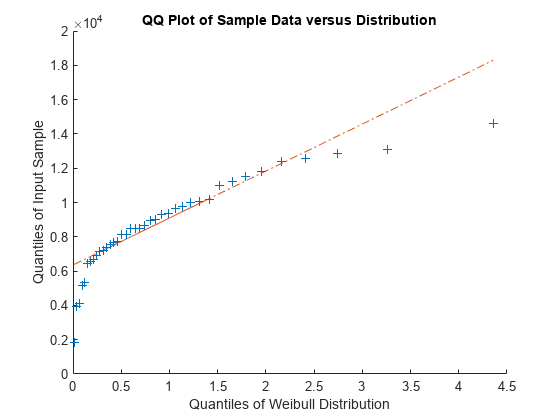qqplot
Quantile-quantile plot
Description
qqplot( displays a
quantile-quantile plot of the quantiles of the sample data
x)x versus the theoretical quantile values from a normal
distribution. If the distribution of x is normal, then the
data plot appears linear.
qqplot plots each data point in
x using plus sign ('+') markers and
draws two reference lines that represent the theoretical distribution. A solid
reference line connects the first and third quartiles of the data, and a dashed
reference line extends the solid line to the ends of the data.
qqplot(___,
displays a quantile-quantile plot with the quantiles specified in the vector
pvec)pvec. Specify pvec after any of
the input argument combinations in the previous syntaxes.
qqplot( uses the
plot axes specified by the ax,___)Axes object ax.
The option ax can precede any of the input argument
combinations in the previous syntaxes.
h = qqplot(___)h) to the lines in the quantile-quantile
plot.
Examples
Input Arguments
Output Arguments
More About
Version History
Introduced before R2006a



